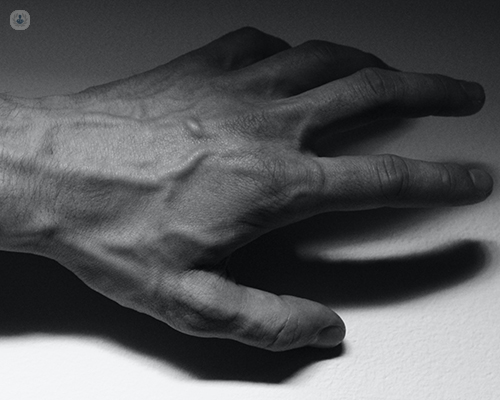Vascular trauma
Mr S. Tawqeer Rashid - Vascular surgery
Created on: 11-13-2012
Updated on: 07-10-2023
Edited by: Jay Staniland
What is vascular trauma?
A vascular trauma is an injury to an artery or vein due to a trauma or blow. These injuries can affect the arterial, lymphatic, or venous system, and are most often located on a limb, especially lower ones (80-90% of cases). The most frequent clinical signs are either haemorrhage or acute ischaemia. Early detection and treatment is crucial to prevent limb amputation, as well as to improve prognosis for the patient.

Vascular injuries may be classed as penetrating or non-penetrating:
- Penetrating trauma: the injury is caused by a foreign object piercing or crushing the skin (e.g. in armed conflicts this tends to be sharp and pointed objects). These may cause a blood vessel to rupture, cause bleeding and a haemorrhage, or cause thrombosis (blood clot).
- Non-penetrating trauma: the injury may be caused by tissue compression or a sudden deceleration. The vessel wall structure breaks, which can result in tearing and thrombosis.
What are the symptoms of vascular trauma?
Blood vessel injuries can cause a variety of symptoms, including: bleeding outside or inside the body, ischaemia (lack of blood reaching parts of the body), and pulsatile swellings called haematomas. There are a few vascular injuries that cause ischaemic symptoms (40%), but bleeding is the commonest symptom. Vascular injury symptoms are often classified into serious or not serious.
Serious symptoms include:
- Absence of a distal pulse, active haemorrhage.
- Acute ischaemia.
- Pulsating haematoma (localised bleeding outside of a blood vessel).
Less serious symptoms include:
- Decreased distal pulse.
- Injury near an important blood vessel.
- Low blood pressure or shock.
- Neurological defect.
With chest injuries, most penetrating vascular injuries are seen during surgery, and may be related to the oesophagus, bronchus, heart, and trachea injuries. Any penetrating wound should immediately be surgically explored. Any delay in doing so may be deadly. In limb injuries, the most common sign of a vascular injury is acute ischaemia: puncture wounds, injuries liked to dislocations, and fractures or low velocity projectiles. An external haemorrhage is less common.
Medical tests to diagnose vascular injuries
In order to diagnose a vascular injury, the specialist will have to physically examine the patient. The specialist will check the patient’s general state, the location of the injuries, the degree of haemodynamic stability (blood pressure, pulse rate), if there are any bone or joint injuries, if there is a haemorrhage or ischaemia, the colour and temperature of limbs, potential motor or sensory neurological deficits, pulsating tumours near the injury, and heart murmurs, among others.
Diagnostic tests can help confirm hidden injuries and help establish the best surgical approach:
- Non-invasive vascular tests such as the Doppler ultrasound to rule out non-visible arterial damage or to confirm blood flow in the arterial tree in patients that are difficult to examine due to oedema or open injuries.
- Computerised tomography angiography (CTA) or MR angiography MRA - These enable the early diagnosis of vascular injuries, and are particularly useful for diagnosing cervical, abdominal, and thoracic injuries.
- Arteriography is the standard test for diagnosing vascular injuries. It allows the location and extension of the injury to be known, as well as what vessels are affected. It also works as access to and control of damaged vessels.
What causes vascular injuries?
The most common vascular injuries are impacts to the blood vessels. The most common of these include traffic, work, and home accidents, in some cases. On rare occasions, the vascular injury may be caused by trauma such as a stab wound.
What is the treatment for vascular injuries?
Treating vascular injuries will vary depending on the type and extent of the injury. Endovascular treatment by embolisation or injections are often used, although they do not always cure the issue. Other techniques include endoprosthesis, which allow the vessel’s lumen to be kept open and avoid haemorrhage by covering the tear in the vessel wall. These are quite commonly used for aortic or supra-aortic vessel injuries, as well as in high-risk patients with concomitant limb injuries. For patients who need an open surgical approach, there are many vascular reconstruction techniques: direct vascular suture, thrombectomy and vascular plasty, bypass with vein or prosthesis, and vessel ligation.
What specialist should I see?
A specialist in vascular surgery treats vascular injuries, and may involve interventional radiologists or angiologists. This speciality diagnoses and treats arterial and venous system conditions.
